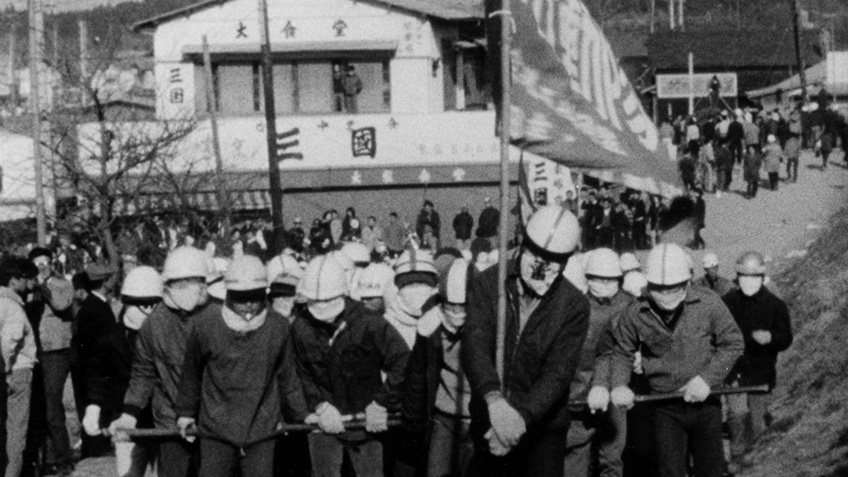Summer in Narita
Ogawa Shinsuke
- Japan
- 1968
- 108min
- DCP
- color
Synopsis
In Narita, Japan, residents of the farming village Sanrizuka rose up in protest against the New Tokyo International Airport Project that had been decided upon without any respect to local concerns. This film is the first in Ogawa Productions’ eight year, seven-films Narita (Sanrizuku) Series. Ogawa
said about this film: “all the shots were taken from the farmers’ side—we were always amongst them, shooting from their perspective. Even when we were shooting the authorities, we shot everything, face-on and also in contrast to this.”
Review
This year marks the 50th anniversary of the Narita struggle which was the largest local movement in Japan following its defeat in the war. Farmers and volunteers still continue the protest against the government’s one-sided decision to construct the new Tokyo airport in Sanrizuka, which is now known as Narita Airport, but it was at its height in the sixties to the seventies. OGAWA Shinsuke went to Sanrizuka from 1968 to 1977 and produced a 7-part series that captured vivid scenes of the protest. This is the first of that series.
Like the first sequence which is a lengthy shot of a farmer enraged at the watermelon field getting destroyed, this film shows the Sanrizuka struggle from the perspective of farmers. However, it is also a way of showing how farmers are changing. As the Korean title implies, it shows the process of the formation of the ‘People’s Liberation Forces of Japan’. There is no actual organization called the Japanese Liberation Forces of course, but the name came from the People’s Liberation Armed Forces of South Vietnam so the scene that shows Sanrizuka farmers fighting against the construction of the airport and identifying with Vietnamese farmers by acknowledging them as the main agents of the Vietnamese War provides a point of view from which to see the Sanrizuka struggle within the world currents of the late sixties.
There is a slight schematic feel about it as the first film to shoot the Sanrizuka farmers but it captures the changing farmers vividly. The women taking part in the struggle look almost as if they are enjoying themselves, which makes us contemplate on many things and could serve as good reference material in thinking about local struggles in Korea.
Director
-

Ogawa Shinsuke
Sennen Theater (1986)A Japanese Village-Furuyashikimura (1982)Magino Story: The Pass (1977)Magino Story: The Serculture (1977)Narita: The Skies of May (1977)
Credit
- ProducerHideko Kobayashi, Hiroo Fuseya, Toshio Iizuka
- Cinematography Masaki Tamura
- Editor Takako Sekizawa
- Sound Toyohiko Kuribayashi
Contribution / World Sales
Contribution / World Sales Athénée Français Cultural Center
Phone 81 3 3291 4339
E-mail takasaki@athenee.net
Website http://www.athenee.net


